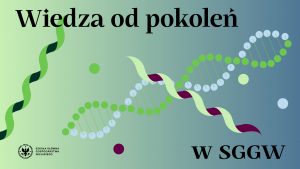INDM Research and Implementation Offer

Department of Mechanical Processing of Wood
Properties of wood materials related to their susceptibility to chip machining (machinability of materials):
- tests of cutting resistance during milling, drilling and sawing
- durability testing of cutting tools when machining wood materials
- testing the quality of processing of wood and wood-based panels (condition of the processed edge, geometric structure of the surface – waviness, roughness, dimensional accuracy and shape accuracy)
Diagnosis of tool wear and machining process:
- tests for noise, vibration and acoustic emission during chip machining
- cutting force tests
- temperature tests in the chip forming zone
- testing the power consumption of machine tool drive units
Optimisation of the processing of wood materials on CNC machine tools:
- selection of cutting parameters
- analysis of production efficiency
- automation of the manufacturing process
- numerical control of CNC machine tools
Modification of the surface layer of cutting blades and production of innovative tool materials for wood and wood-based panel machining:
- testing of beam-based surface modification methods (ion implantation, electron beam, plasma beam, lasers) to increase the durability of cutting edges
- research into methods of producing tooling materials dedicated to the furniture industry
- research and modelling of blade wear mechanisms during processing of wood materials
Fire protection of wood:
- testing of modern weather-resistant flame retardants
- increase the durability of the fire protection of wood
Department of Wood Science and Wood Protection
Research and service offerings from the Department of Wood Science and Wood Preservation:
- Analysis of the structure and properties of wood
- Species identification of wood (domestic, exotic, archaeological, including charcoals).
- Study of wood structure.
- Wood grain analysis.
- Standardised tests and examinations for the physical characteristics and strength of wood, wood materials of various types (e.g. laminate flooring) according to the current ISO standards.
- Structural timber assessment.
- Testing the natural durability of wood.
- Carrying out ageing tests on wood and wood materials.
- Determination of xylophagous insect species.
- Determination of wood decaying fungi species and moulds.
- Recording and assessment of wood damage.
- Testing the acoustic insulation of building materials.
- Investigations of the state of preservation of wooden elements and trees.
- Non-destructive testing of the state of preservation of wood and wood components.
Chemical tests and analyses
- Analysis of the chemical composition of wood and other lignocellulosic materials.
- Molecular weight analysis of cellulose, including determination of its degree of polymerisation.
- Molecular weight analysis of other polymers.
- Analysis of starch content in plant raw materials.
- Qualitative and quantitative analysis of simple sugars.
- Qualitative and quantitative analysis of ions (cations and anions) in aqueous solutions.
- Identification and quantitative analysis of volatile compounds.
- Quantitative and qualitative analysis of elements in liquids and solids.
- Studies on hydrolysis (acid and enzymatic) and fermentation of lignocellulosic raw materials.
- Porosity testing of lignocellulosic raw materials.
- Study of the phenomenon of physical and chemical degradation of wood.
- Study of thermal and chemical modification processes of wood.
Department of Technology and Entrepreneurship in the Wood Industry
Properties of raw materials and wood materials:
- physical testing of wood-based materials (thermal properties, surface absorption, swelling, absorbability, etc.)
- testing the performance of wood-based materials (accelerated ageing processes)
- tests on the structure of fibrous materials
- durability testing of wood and wood-based materials
- studies on free formaldehyde emission by gas analysis
- free formaldehyde testing by the Perforator method
- testing the mechanical properties of wood-based materials
- strength testing of joints of wood and wood-based materials
- tests on the quality of bonding and the strength of glue joints
- strength and stiffness tests of timber structural members
- testing of joints in furniture, building and joinery structures
- testing of girders and beams with a span of up to 5 m and a carrying capacity of up to 10 tonnes
Properties of adhesives and coating systems
- testing the properties of varnish products and varnish coatings
- testing the UV resistance of materials and coatings with the possibility to simulate precipitation
- ageing tests on finishes, adhesive joints and other materials
- testing of coating properties (adhesion, hardness, colour, abrasion, scratching)
- tests on adhesives and adhesive joints
- structural testing of coatings, including historic coatings
testing the adhesion and penetration depth of mastic, colouring compounds and other wood finishes
Analysis and selection of technological assumptions
- selection of technological parameters of gluing
- selection of technological parameters for manufacturing wood-based panels
- research into the possibilities of using waste materials (recycled) in wood-plastics technology
- developing technologies for new wood-based composite materials using non-wood raw materials
Economics and management in wood and furniture enterprises
- defining growth strategies for furniture manufacturers
- internationalisation processes of furniture enterprises
- competitiveness analysis of the furniture industry
- analysis of the financial condition of companies
- early warning models for business failure
- restructuring of undertakings
- analyses in the field of foreign trade in furniture